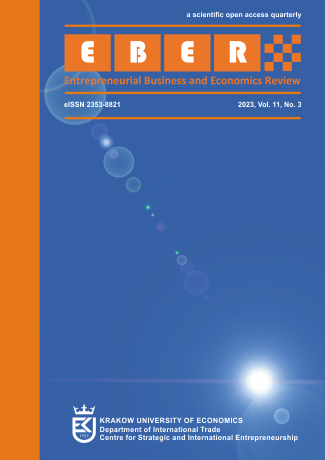Using trigonometric seasonal models in forecasting
the size of withdrawals from automated teller machines
Using trigonometric seasonal models in forecasting
the size of withdrawals from automated teller machines
Author(s): Henryk Gurgul, Łukasz Lach, Marcin Suder, Karol SzpytSubject(s): Business Economy / Management, Socio-Economic Research
Published by: Uniwersytet Ekonomiczny w Krakowie
Keywords: ATM; withdrawals; forecasts of withdrawals; ATM network management; TBATS model; SARIMA model; calendar effects;
Summary/Abstract: Objective: The study focused on verifying the impact of the calendar and seasonal effects on the accuracy of forecasts of cash withdrawals from automated teller machines (ATMs). In this article, we investigated a possi- ble use of the so-called trigonometric seasonality, the Box-Cox transformation, ARMA errors, trend, and sea- sonal components (TBATS) models to forecast withdrawals from ATMs. In practice, the SARIMA model is widely used as a forecasting tool. However, the major limitation of SARIMA models is that it allows just one single seasonality pattern to be taken into account, e.g., weekly seasonality. At the same time, cash withdraw- als from ATMs display overlapping multi-seasonality. Therefore, the goal of this article is to compare the SARIMA model with the TBATS model, both in basic forms and forms extended with event-specific dummies. Research Design & Methods: Empirical research was conducted by means of fitting SARIMA and TBATS mod- els to daily time series of withdrawals from 74 ATMs managed by one of the largest ATM operators in Poland. The dataset covered the period of 2017-2019.Findings: Forecasting levels of cash withdrawals plays a crucial role in the management of ATM networks, both in the case of a single ATM as well as the whole network. Prediction accuracy has a direct impact on the oper- ational costs of the network. These costs result from activities such as freezing cash in an ATM, preparing it, and transporting it to an ATM. Therefore, the choice of a proper forecast model is of special importance. According to statistical evidence in our study, the basic TBATS model gives more accurate forecasts than the basic SARIMA model widely used in practice.Implications & Recommendations: The multi-seasonality of ATM withdrawals means that it is necessary to use techniques that take such phenomena into account in a single joint model. Multi-seasonality can be mod- elled using TBATS models. The study confirmed that TBATS models can be considered useful alternatives in planning cash replenishments in ATM networks.Contribution & Value Added: This article is an extensive empirical study on the selection of proper methods and forecasting models necessary to predict withdrawals from ATMs with overlapping multi-seasonalities and calen- dar effects. We proved that taking seasonal and calendar effects into account when forecasting withdrawals from ATMs significantly reduces forecast errors. Statistically significant improvement in forecast accuracy was ob- served both for SARIMA and TBATS. After taking calendar effects into account, TBATS forecast errors were slightly smaller than those resulting from corresponding SARIMA models. However, this result is statistically insignificant. The results of this study imply a need for further studies on the applications of TBATS models in forecasting the required cash level in ATMs, which in turn may help improve the efficiency of ATMs network management.
Journal: Entrepreneurial Business and Economics Review
- Issue Year: 11/2023
- Issue No: 3
- Page Range: 181-204
- Page Count: 24
- Language: English

